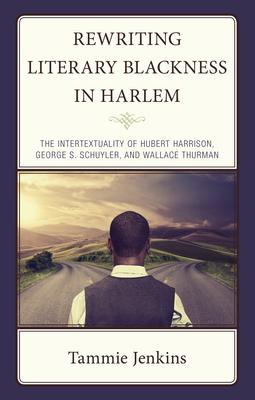For decades, scholars have placed the "New Negro" and Harlem's Literati movements and their participants under the Harlem Renaissance's umbrella with these monikers used interchangeably in scholarship to describe a seemingly singular literary and cultural moment in history. In Rewriting Literary Blackness in Harlem: The Intertextuality of Hubert Harrison, George S. Schuyler, and Wallace Thurman, Tammie Jenkins argues that these are distinct movements that share intertextually related ideological views that occurred on a literary continuum. Harrison's, Schuyler's, and Thurman's contributions have rarely been viewed and analyzed through an isolation of their respective movements. Using works published by Harrison, Schuyler, and Thurman during the early twentieth century, Jenkins investigates how their works redefined blackness at the intersections of race, gender, class, and geography. This book provides new insight into the intertextual relationships between the New Negro Movement, the Harlem Renaissance and Harlem's Literati to scholars and academic libraries interested in cultivating and expanding understandings in African American Literature, African American History, Black Studies, and African American Studies.

Rewriting Literary Blackness in Harlem: The Intertextuality of Hubert Harrison, George S. Schuyler, and Wallace Thurman
For decades, scholars have placed the "New Negro" and Harlem's Literati movements and their participants under the Harlem Renaissance's umbrella with these monikers used interchangeably in scholarship to describe a seemingly singular literary and cultural moment in history. In Rewriting Literary Blackness in Harlem: The Intertextuality of Hubert Harrison, George S. Schuyler, and Wallace Thurman, Tammie Jenkins argues that these are distinct movements that share intertextually related ideological views that occurred on a literary continuum. Harrison's, Schuyler's, and Thurman's contributions have rarely been viewed and analyzed through an isolation of their respective movements. Using works published by Harrison, Schuyler, and Thurman during the early twentieth century, Jenkins investigates how their works redefined blackness at the intersections of race, gender, class, and geography. This book provides new insight into the intertextual relationships between the New Negro Movement, the Harlem Renaissance and Harlem's Literati to scholars and academic libraries interested in cultivating and expanding understandings in African American Literature, African American History, Black Studies, and African American Studies.